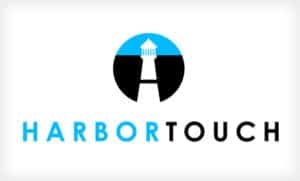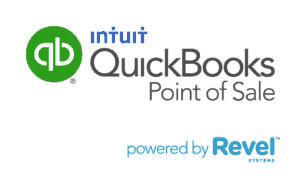Why You Need A Restaurant POS System
A good restaurant point of sale (POS) system is vital to the success of your restaurant in so many ways.
Why is that?
It’s because “point of sale” is somewhat of a misnomer—that is, the term has grown to mean so much more than just “a means to take payments.” Indeed, today’s restaurant POS systems are complete business management systems. Yes, they still take payments, but they also do a whole lot more.
There are three main ways a modern POS system benefits your restaurant:
- Mobility: Today’s top restaurant POS systems are largely tablet-based and cloud-based, meaning you can use your POS in non-standard settings and monitor your business from afar. This allows you to do things like sell at food truck events and farmer’s markets, and check in on how your restaurant is doing while you’re on vacation. Even for traditional brick-and-mortar restaurants, using a mobile or iPad POS system has many benefits.
- Flexibility: Modern restaurant POS systems largely use a monthly pricing model, which means you don’t have to invest too much money upfront, and you don’t need to commit to a particular POS system long-term. You can usually even use most or all of the same equipment for a different restaurant POS system if you decide to switch. These systems are also completely scalable, making adding (or subtracting) registers to/from your setup a breeze.
- Convenience: A cloud-based restaurant POS modernizes your entire restaurant operations, from your ordering system to your back-end operations. On the customer’s end, they also benefit from the convenience of a modern point of sale that lets them place their orders or reservations online, and pay with a mobile wallet or even with loyalty points they’ve collected from previous visits. From the point of view of your servers—who almost certainly already know how to use a touchscreen device—the ease of use offered by a modern POS is unparalleled.
Increasingly, a well-functioning, up-to-date restaurant POS system is becoming standard at any establishment that serves food or beverages. Sure, you may be able to put off upgrading for the time being, but the sooner you upgrade, the sooner you can start experiencing the benefits of a restaurant POS.
Finding The Right Restaurant POS Software For Your Business
The size and type of your restaurant will largely determine how advanced of a POS system you need. Small restaurants and quick-serve establishments generally need just one register and can get by with more basic features, whereas a full-service, multi-location business will have more advanced needs.
The first step to finding the right restaurant POS software for your establishment is to make a list of the features you need, and perhaps another list of “nice to have” features that could be useful but aren’t absolute necessities. Here are some suggestions:
- Order Entry: Use the POS system to enter and edit orders and send them straight to the kitchen, either from the POS register (for quick-serve) or from servers’ handheld devices (for full-service).
- Recipe Costing: Calculate ingredients, labor, and any other inputs to determine any menu item’s total cost and profitability.
- Table Mapping: Manage guests, their orders, and their bills by a visual representation of their tables in your restaurant.
- Integrated Payment Processing: Process electronic payments at a competitive rate, via in-house processing or by integrating with your existing merchant account. Flat-rate or interchange-plus pricing is generally preferable, as is EMV and NFC support.
- Customer Management: Track repeat customers and engage with them with targeted promotions via text or email.
- Raw Ingredient Tracking: Keep track of all your ingredients so you know what you have in stock and when to reorder.
- Purchase Orders & Vendor Management: Manage your purchase orders and vendors all in one place.
- Reporting Suite: Generate reports to track bestsellers, server tips, and many other restaurant metrics.
- Online Marketing Features: Can include social media marketing, email/text marketing, as well as review management on sites like Yelp.
- Employee Management: Let your employees clock in and out using the POS, view employee reports, set employee alerts, and perform other staff management tasks.
- Payroll: Process payroll right from your POS.
- Offline Mode: Continue to process payments if your internet connection falters, or queue your pending payments so they will process once your connection resumes.
- Online Ordering System: Allow customers to order food online from your website, using a custom app, or with GrubHub, Postmates, etc.
- Delivery Management: Track take-out orders, drivers, and delivery statuses.
- Reservations & Waitlist Management: Allow customers to make online reservations or add themselves to your waitlist. Can be an in-house system or via an integration with a service like OpenTable.
- Tableside Payments: Have customers sign off for their check electronically, right from their table.
- Loyalty Program: Reward repeat customers with loyalty points they can use toward another purchase.
- Gift Cards: Sell and accept gift cards at your POS. Can include physical and/or electronic gift card options.
- 24/7 Support: Make sure a live person is always reachable to solve POS and payment-related issues, either over the phone or live chat.
- Self-Ordering Kiosk: Let customers place and pay for their orders using a self-service station.
- Integration With QuickBooks & Other Business Software: Make sure your POS works with the software you already use, or software you may need to fill in any gaps that your POS doesn’t provide.
- Kitchen Display System: If you want to upgrade from your kitchen printer, you can use a more efficient electronic display system.
- Digital Menu Board: Let customers order from an electronic menu board, which is easy to edit and adjust if you have rotating offerings. Ideal for breweries, coffee shops, and quick-service.
- Multi-Location Management: Track inventory, staff, profits, and other data across multiple restaurant locations.
Some POS systems offer specific features for particular niches like pizza parlors or food trucks. For advanced features such as a KDS or gift cards, you will typically pay for the service as a monthly add-on to your base package.
For more help finding the POS, check out How To Choose A Restaurant POS System.
How Much Do Restaurant POS Systems Cost?
Restaurant POS system costs vary depending on how many features you want and what equipment you need. As for hardware, a standard setup with an iPad, iPad enclosure, credit card terminal, receipt printer, cash drawer, and kitchen printer can be purchased for less than $1,500. Of course, additional registers and hardware systems, such as digital menu boards or self-ordering kiosks, can add to the price.
Regarding software, several restaurant POS companies offer a complete set of features in the neighborhood of $60 to $80/month. However, if you want every feature on offer (most restaurants won’t), you might pay upwards of $200 to $350/month. Generally, you don’t want to pay for features you will not use, and most cloud POS systems help you circumvent the possibility of overpaying by offering you several differently priced packages that include different feature sets, with advanced features available as optional add-ons.
Check out The Best Restaurant POS Systems For 2020 to see some quotes for popular systems.









